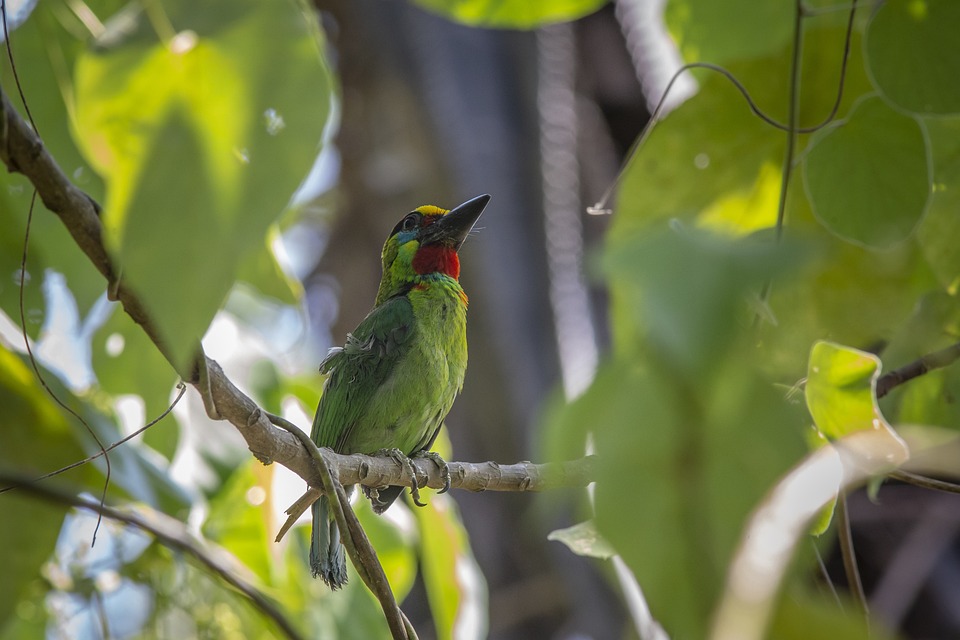Parrots are highly intelligent and social creatures that experience hormonal fluctuations, especially during breeding seasons. These hormonal changes can lead to various behaviors that may be challenging to deal with. However, with proper knowledge and strategies, you can address and manage hormonal behavior effectively.
Hormonal behavior in parrots is most noticeable during breeding seasons, which can vary depending on the species and environmental factors. It is particularly common in sexually mature parrots but can also affect younger birds reaching sexual maturity.
During hormonal periods, both male and female parrots may exhibit certain behaviors that indicate their readiness to mate. These behaviors can include increased vocalization, regurgitation, nest building, increased territoriality, excessive chewing, and even aggression. It’s crucial to remember that these behaviors are natural and part of a parrot’s biological makeup.
Recognizing the signs of hormonal behavior is the first step in effectively addressing and managing it. Here are some signs to watch out for:
1. Increased Vocalization: Parrots tend to become more vocal during hormonal periods. They may make louder and more frequent calls, squawks, or screams. This behavior is their way of attracting a mate or defending their territory.
2. Regurgitation: Parrots may regurgitate food or other objects as part of their courtship behavior. This regurgitation is often directed towards their favorite toys, mirrors, or even their human caregivers.
3. Nest Building: Female parrots, in particular, may exhibit nest-building behavior during hormonal periods. They may gather materials, such as paper, twigs, or feathers, to construct a nest or find hidden spots in your home to nest.
4. Increased Territoriality: Hormonal parrots may become more possessive and protective of their surroundings. They may show aggression towards perceived threats, such as other pets or family members.
5. Excessive Chewing: Parrots love to chew, and hormonal behavior can amplify this natural instinct. They may chew on cage bars, furniture, or even themselves. Excessive feather plucking can also be a sign of hormonal behavior.
Once you recognize these signs, it’s important to address and manage hormonal behavior in your parrot. Here are some practical tips to help you:
1. Limit Nesting Opportunities: To discourage nesting behavior in female parrots, remove any potential nesting sites or materials from their environment. This includes hiding spots, dark corners, and excess bedding materials.
2. Adjust Light Exposure: Parrots’ hormonal cycles can be influenced by the amount of daylight they receive. By reducing artificial lighting or covering their cage earlier in the evening, you can help regulate their hormonal behavior.
3. Avoid Overstimulation: Excessive petting, cuddling, or allowing parrots to spend too much time alone with mirrors or toys can trigger hormonal behavior. Maintain a balanced interaction routine to prevent overstimulation.
4. Provide Mental and Physical Stimulation: Engaging parrots in mentally stimulating activities, such as foraging puzzles or training sessions, can redirect their energy and distract them from hormonal behaviors. Regular exercise and playtime are equally important for their overall well-being.
5. Consult with a Veterinarian: If your parrot’s hormonal behavior becomes excessive, persistent, or concerning, it’s essential to seek professional advice. A veterinarian with avian expertise can help assess the situation and provide guidance tailored to your parrot’s specific needs.
In conclusion, understanding and addressing hormonal behavior in parrots is essential for maintaining a harmonious relationship with your feathered companion. By recognizing the signs and implementing appropriate strategies, you can help your parrot navigate their hormonal cycles while ensuring their well-being and happiness.









